By Tom Demerly for TriSports.com.

A problem with shoe companies is they loose touch.
[youtube]http://www.youtube.com/watch?v=4fVMI1PZj4M&list=UUNsFQ1vURrsS4QlJyAL_KTg&index=5&feature=plpp_video[/youtube]
They get too big, too detached from fitting shoes on a customer’s foot and letting them take a test run. They aren’t connected to the daily aches, pains and complaints of the average runner- and running shoe salesman.
So began Mr. Golden Harper. And Altra Shoes.
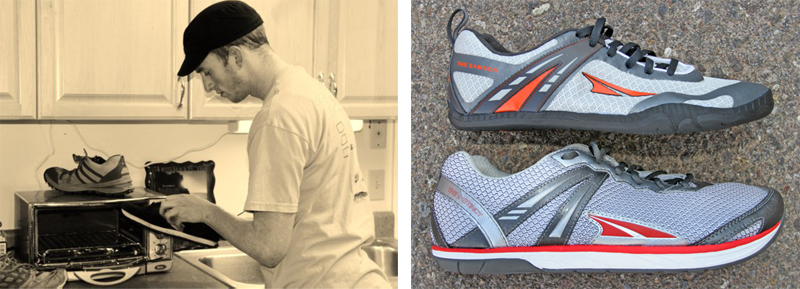
Harper was a running shoe salesman who began modifying shoes for his customers by removing midsole material to reduce the differential between the toe and heel of the shoe, the dimension referred to as “drop”. He carved out thick padding and EVA wedges and re-glued outsoles. He often melted shoes by accident in an oven when attempting to re-bond them. His re-engineering of shoes became so popular he was inspired to start a separate company that made low-drop shoes. Altra Running was born.
Harper’s motive to reduce drop or heel-toe differential is founded in principles of improving and injury proofing runners. By leveling heel and toe height the muscles and connective tissues in the back of the leg adapt to a longer range of motion, thus reducing the chances for overuse injury. Since the heel does not protrude during the pre-footstrike phase of the gait, it is less likely the runner will develop a heel-first, “heel strike” style gait. The heel striking gait exerts a “braking” effect on the running stride and results in deceleration. The thesis for low drop running is higher drop shoes cause your heel to hit harder slowing you down and improving your chances of an injury.
Altra shoe designs aren’t an ebbing trend. They are common logic.
But before you equate Harper’s shoes with the “Born to Run”, “barefoot”, Vibram Five Finger and Tarahumara native culture running craze let me stop you: This isn’t that. It isn’t an ebbing trend driven by a New York Times bestseller and backed up by zany looking toe shoes. It is valid design. It is common logic. Most significantly, given the trajectory of Altra Shoes, this shoe design would have been created by Golden Harper in a vacuum. These shoes didn’t come from the “Born to Run” craze. They came from street level experience with the average running shoe buying public at the retail level. Because of this Altra shoes strike a balance between traditional and minimal running.

Altra Running shoes were preceded by similar thinking well before the barefoot craze in 1970 by Danish shoe designer Anna Kalso, the designer of the once popular “Earth Shoe”. Kalso’s designs were an early “viral” phenomenon that trended prior to the Internet. The idea was similar to Harper’s concept of allowing the foot to perform naturally. While Earth Shoes actually had “reverse drop” (heelwas lower than toe) the primary correlation between the Kalso Earth Shoe and the Harper Altra is the shape of the toe box.
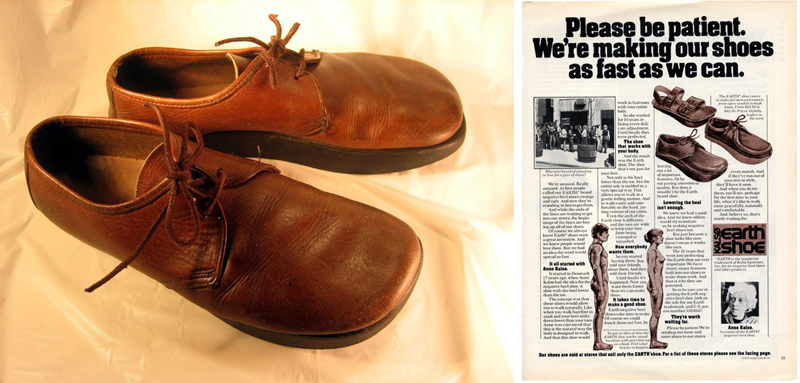
Whether by evolution or fashion running shoe toe boxes have trended to the more pointed shapes. Altra’s designs are blunt. The wider toe box is noticeably more… “airy”. Your toes feel unrestricted. Your feet feel cooler. Blisters and hot spots may be reduced in some runners. Perhaps most importantly, your toes are back in the active gait cycle since they can move inside the shoe, helping with guidance on push off. While running in the blunt-toed Altras I also notice shoe handling is much better. Your footwork on dodgy sections becomes more precise. Push-off is more responsive.

That the Earth Shoe phenomenon preceded the Altra Zero Drop Running blunt toe box is significant since, in a historical sense, it validates Altra’s designs. It worked before, it works again, and Earth Shoes isn’t making performance running shoes.
The Shoes.
Altra Zero Drop Footwear make ten styles across two genders, five each female and male. For the past two months I’ve worn the men’s Instinct.
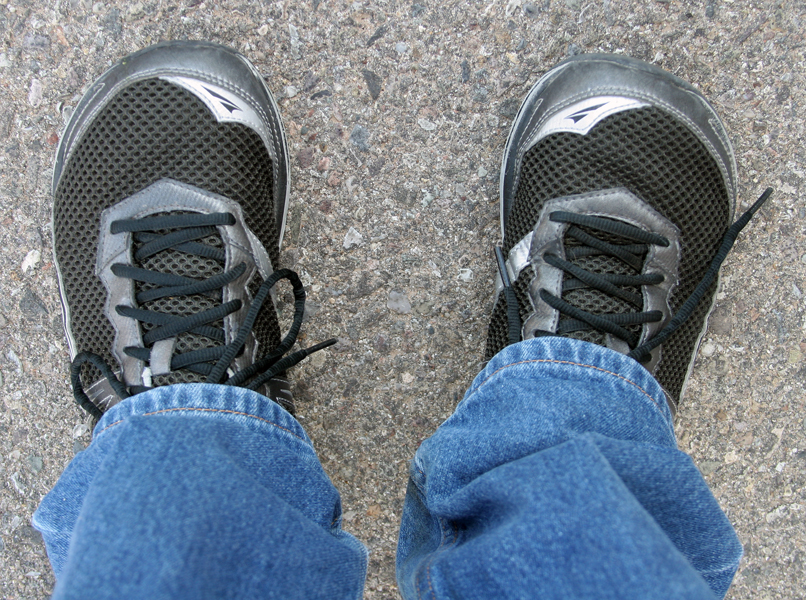
The Altra Instinct is available in two colorways, a light and a dark version. The Instinct features two different footbeds that provide three different proximity between foot and ground and three different levels of fit and cushion.
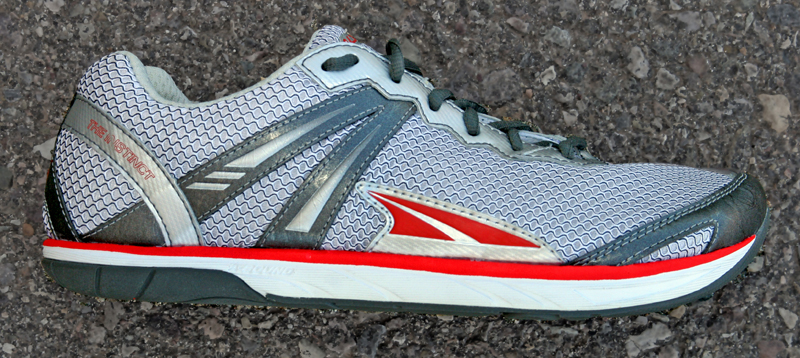
In the two months I used (and continue to use) the Instinct I wore them differently than Altra likely intended. I wore them all the time. While there is an axiom that you don’t wear running shoes as casual shoes the Altras break that mold. The reason you shouldn’t wear conventional, high drop running shoes as casual shoes is because of the cushioning, drop and lack of stability. It isn’t “natural”. The reason Altra is well suited for an everyday casual shoe is because they have no drop. They help “injury” proof you even if you choose to do most of your running in traditional geometry running shoes. I’m convinced the Altra Instincts helps moderate lower leg and foot discomfort I was experiencing from higher mileage running and frequently changing shoes. I think they made my lower leg and feet stronger.
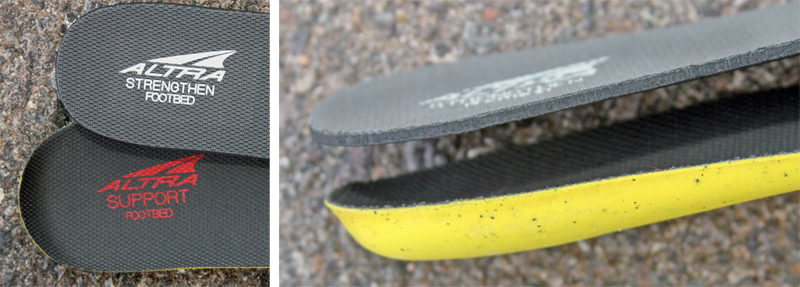
Altra’s trail shoe, the Lone Peak, adds features to improve traction and durability on trails. Trail shoes break into two broad sub-categories that include built-up “light hikers” like many Salomon and The North Face styles and real-world trail running shoes made to work for runners training on trails. The Altra Lone Peak is the later. Every feature on the Lone Peak is “real world” trail running.
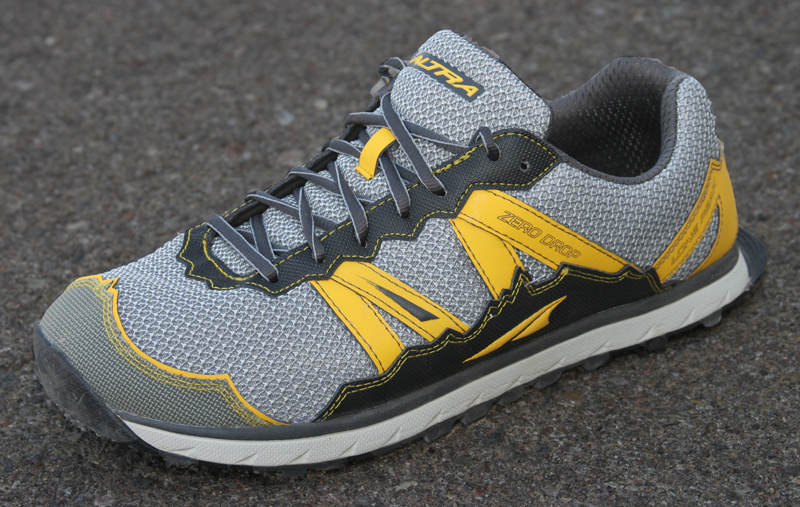
Starting with the sole the Lone Peak uses a widely spaced lug pattern that doesn’t trap debris and has crampon-like grip on ascent and descent. Combine that sole grip with the great handling of the snub-nose Altra design and this is an easy shoe to run sketchy trails on. Altra added a skid brake to the heel of the shoe, a flap of carbon rubber called the “Trail Rudder” that helps prevent your feet from going out from under you when scrambling down sketchy descents. The sides of the shoe wear a textured polymer armor plating to protect against rock strikes and even add traction with really off-angle foot plants, like a rock climbing shoe.
The outsole on the Altra Lone Peak is not radius-ed like the pavement friendly Altra instinct. It’s a more conventional outsold profile. It may be interesting to see a radiused outsole version but, it may also destabilize the currently functional outsole design with its grippy, square edges.

When I wore the Lone peak the first thing I thought of was the ultra-distance and adventure races I’ve done; Raid Gauloisies Vietnam, Discovery Channel Eco-Challenge, Marathon des Sables, Jordan Desert Cup and Antarctic Marathon. This shoe would have eliminated foot problems during each of those events and improved comfort. An bane of ultra-distance races in extreme heat is foot swelling and toenail loss. This shoe design would minimize both with adequate room for the foot to inflame and the blunt toe box to prevent toenail loss. If you are an ultra runner or serious trail runner I recommend a review of the Altra Lone Peak of your own.
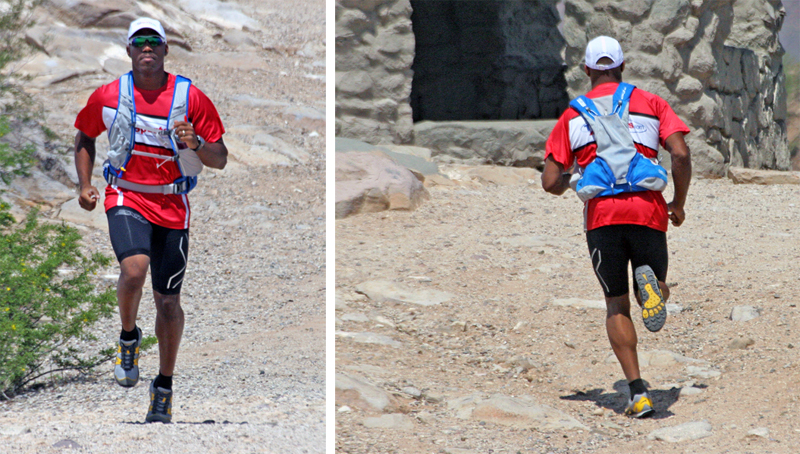
While Altra started as a running solution my two month review of the shoes suggests their utility may extend beyond just running. These are valid running shoes, but their unique value may extend to a therapeutic benefit from wearing them all the time and allowing the lower leg to adapt to a more natural foot interaction with the ground, potentially injury-proofing you for other shoes.
If you’re looking for that next big thing that will “fix” your running, make you injury proof, help you lose weight and become a better runner Altra doesn’t claim that, at least not entirely. I’ll reinforce that, after 2 months in the shoes, they won’t do that. No single shoe will. It’s not as easy as a magic pair of shoes. But the Altra Zero Drop Running shoes are different enough to exert an effect on your lower leg training, and I’ll suggest that effect is likely a benefit.
